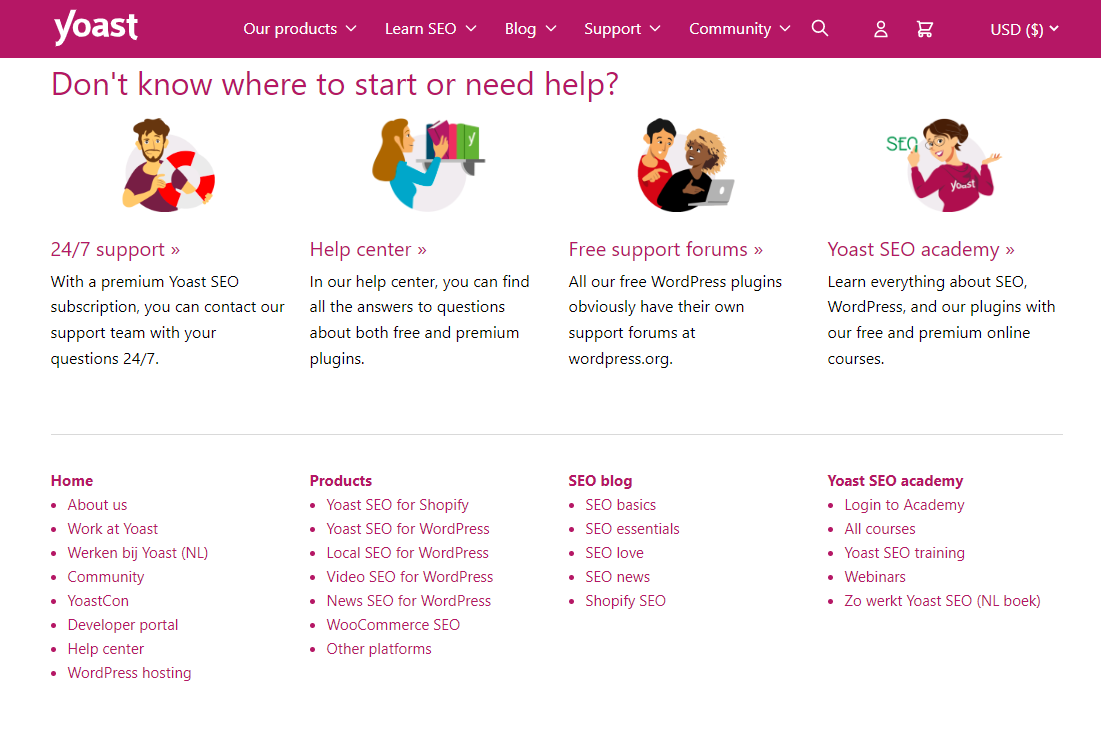When creating and maintaining a website, Search Engine Optimization (SEO) is always an essential factor to consider. Some of the main aspects of SEO are proper keyword research, backlinking, writing a great meta description, eye-catching titles, and creating well-researched content. However, having a sitemap for your website is a fundamental ranking factor and should be overlooked more frequently as it significantly impacts your site's SEO.
What is a sitemap?
A sitemap is a route to understand the website's structure which helps search engine bots in indexing and assists humans in finding what they search for on your website easily. There are two types of sitemaps; XML and HTML. XML sitemap is machine-readable while HTML is human readable.
Let's discuss XML and HTML sitemaps in detail.
XML sitemap
An XML sitemap is a text file marked with tags that provide search engines with a list of URLs on a website. Moreover, this information makes it simpler for search engine bots and spiders to find your website's pages.
Let's take a look at the example www.wapgee.com/sitemap.xml, and you can see the screenshot below showing the XML sitemap for the website of Wapgee.

Why do I need an XML sitemap?
Unlike other search engine bots, Google prefers using XML sitemaps, which helps Google know and understand your website's URLs. Moreover, XML sitemap prioritizes your pages, so search engines know which part of your site is essential. It increases the visibility of your website in Google indexing. Furthermore, you can quickly check how many URLs have been indexed from your sitemap and troubleshoot any issue.
One of the great benefits is letting Google know when posts on your site were last updated and assisting SEO as the search engine crawls the updated content as soon as possible. Google knows about new content. So when there is a modification on any date on the sitemap, it starts to crawl and index.
Essential parts of an XML sitemap:
- Search engine crawlers use an XML version declaration to determine the file type.
- The URL set which tells about the protocol
- The URL that lists all the URLs of your site
- Lastmod is a format of date which shows when the page was last updated
What websites should have an XML sitemap?
According to Google's documentation, a sitemap is essential for the following websites:
- Large websites
- Websites with large archives
- New websites with a few external links
- Websites with rich media content
HTML sitemap
An HTML page with all the subpages listed is created for the users to help them overview the structure of your website. You can find an HTML sitemap in the footer of a website; therefore, it is visible to visitors. An HTML sitemap is a well-organized clickable list of web pages, including every main and lower-level page. Moreover, it aids SEO by directing search engine bots to get a complete structure of your website.
Here is an example of the HTML sitemap of Yoast.

Why do I need an HTML sitemap?
Having an HTML sitemap for your site depends on many factors. However, it would be great to create a sitemap as it makes it easier for your visitors and aids SEO.
Search engine spiders recommend XML sitemap for accurate and quick crawling. However, Google also considers user experience when ranking websites. HTML sitemap is the architectural blueprint of your site that ensures your user-friendly functionality. Furthermore, the following reasons why you should have an HTML sitemap:
- Organization of large websites
- Easy management of the content of your site
- Define the purpose of your website
- You can easily categorize your content
- Enhance the work of search engine crawlers
- Increases the visibility of your website in search engine
- Help to drive more visitors to your page (a great benefit if you're an eCommerce website)
- An opportunity to identify and improve site navigation
- Quick identification of internal links
Essential parts of HTML sitemap:
- Categories- Listing of topics (from each vital web page to the least important)
- Creating an easy-to-understand hierarchy
- An optimized anchor text
What websites should have an HTML sitemap?
- Large websites
- Significant content with many internal and external linking
- Websites with content on various categories
- Websites with product services
Take away:
XML stores data in structured information, whereas HTML represents the content. XML sitemaps allow your web pages to be crawled by Search engine spiders and get indexed faster in Search Engine. However, an HTML sitemap does the same for humans, enhancing the user experience and making site navigation easier.
Hence, sitemaps help search engines and users access websites' data; XML enables Google to index your web pages, and HTML sitemaps allow visitors to access subpages quickly.


